The Danish Navy: Skagerrak’s Guard
In the 1930s already the population and elites spontanously agreed that the defense of the country was unfeasible. Pacifism also, like in the Netherlands, and from 1930 the world economical crisis, severely limited any expansion or modernization of the Danish Navy, which was quickly sunk or inactivated until the 1943 ‘coup’ and scuttling of what was left of the fleet (see the Danish Navy in WW2). See the Danish Navy WW2 poster as a refresher. The context post-WW2 however, was different. Under the vigilant eye of the US, Western Europe started to rebuilt, facing a growingly defiant Soviet Union. Instead of the loose alliances and institutions of the past, the world in 1945 seemed more stable, with a more powerful UN, and from 1949, the creation of NATO. Meanwhile, Denmark had to rebuilt its navy from scratch. First, through war reparations, a few German ships were obtained. Some ships refugees in neutral Sweden came back also. At last, UK provided a number of vessels on loan.
From there, Søværnet, the Danish Navy, was rebuilt as well as shipyards were cleaned up and resupplied, with new installations and utility buildings. Naturally, Denmark was a signatory of NATO treaty and benefited financial aid to rebuilt its industry. Both the geographical situation, political will and NATO necessities in the area limited the size and scope of the Navy to a coastal one, with relatively small, but well-armed and versatile vessels, but nothing above the Frigate rank. Corvettes and Submarines as well as FACs and minelayers were also part of the ensemble. All in all in 1990 (as it was drastically reduced afterwards), this was a much more potent and well-rounded up Navy than in 1940, well able to interdict the Skagerrak to the Soviet Navy (for some time).
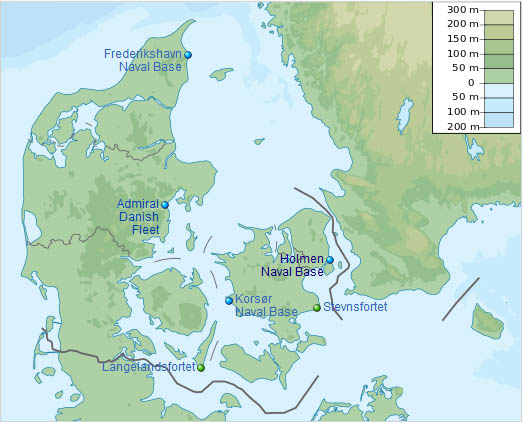
A long reconstruction
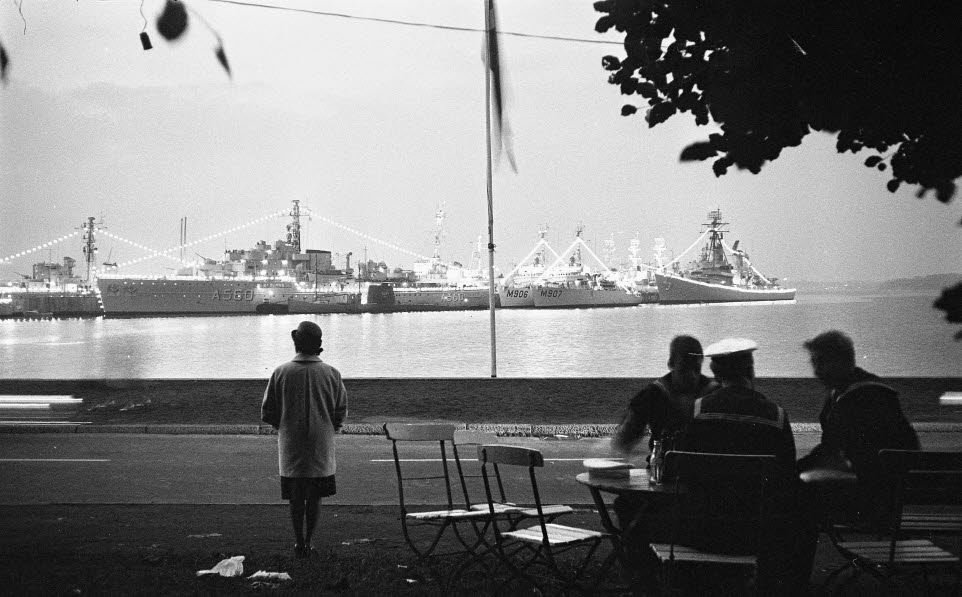
Delfinen at the Kiel week
Denmark endured decades of intense international military tensions of which the population was not always conscious, but that period left a lasting mark on naval personnel in service these 40 years for the Royal Danish Navy.
Immediately after war, the Danish Navy was to to be rebuilt from the ground up like in 1807 and the first task was to sweep the Danish territorial waters so as marine traffic could resume, and economical activities as well.
To perform this, a large number of minesweepers were leased from Great Britain. Next re-establishing and upholding Danish sovereignty ans also guarding waters in the Faroe Islands and Greenland impose dthe purchase of longer range, more capable vessels. So the THETIS, a modest Flower class, well suited for these waters, and two frigates of the River class were also purchased, used for for inspection duty and training ships for cadets. The Copenhague Royal Naval DockYard was also restored after the German wholesale destruction, and the base modernized, while plans were made for new constructions, some interrupted by the war and resuming like the HUITFELDT class torpedo boats (1947), first of a long serie lasting until the soloven in the 1960s, the latter being already closer to fast attack crafts and Motor torpedo boats than traditional interwar TBs.
On the first anniversary of the liberation of Denmark on May 4, 1946, the Royal Dock Yard launched the first postwar Bille class TB, quite a landmark (the Huitfeld were started before the war). It was bolstered by the obtention of 12 German S-Boats (Schellboote) of the Bundesmarine, purchased in 1947-48. They were discarded in the 1960s.
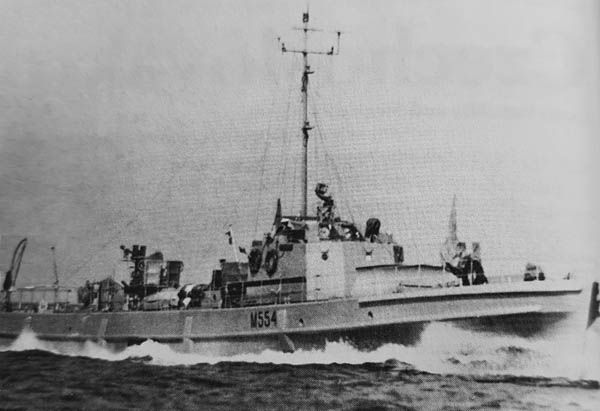
Stigsnaes on trials, 1955.
Denmark joins NATO
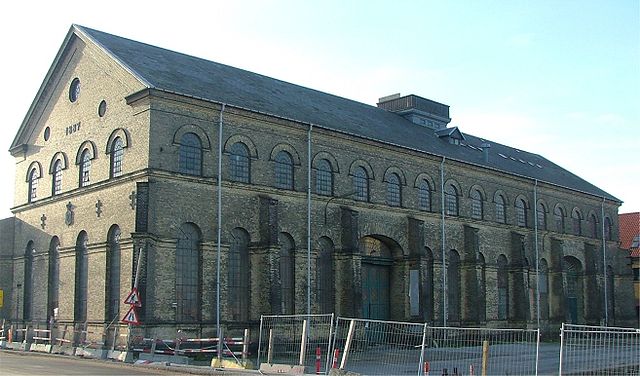
The ancient Royal Arsenal
Membership for Denmark intervened as early as October 24, 1945 but of the UN, while discussion fo defence integration started right away. Establishing a joint Nordic defense cooperation was discussed but plans for joining it did not work out and instead, Denmark teamed with Norway to join The North Atlantic Treaty Organization in 1949. On April 4, 1949, Gustav Rasmussen signed the NATO-treaty and the country became a valid member on August 24, 1949. There were not much dicussions about this: By controlling the skagerrak, Denmark also loced any possible sortie of the Soviet Baltic sea into the Arlantic. Tensions however cast a shadow over the whole region, with soon an icreasing activity from both Soviet submarine and long range bombers. Meanwhile, Denmark made its navy shine for more paciofic purpose, with the scientific expedition of the Corvette Galathea, circumnavigating the globe.
It was a worthy successor of the first Frigate GALATHEA in 1845-47 and the marine research ship DANA in the 1920s. Creating the economic foundation for such a venture succeeded through private funds and the ship chosen was the ex HMS LEITH purchased from the British Royal Navy. Renamed GALATHEA like the first expedition’s vessel she was modified as a survey ship and depatrted Copenhaguen on October 15, 1950 for a global deep-sea expedition, 1,5 year in all, back to the capital on June 29, 1952. It attracted great international attention and also put the light on the renewed Danish Navy.
The Korean war
The Korean War erupted in 1950, and international tension grew dramatically. Soon, a UN backed coalition led by the USA sailed to the peninsula to try to save the beleaguered South Korean army. For the Danish navy this pushed dramatically the readines status, but were many discussions about how the country could contribute to the effort. In 1950 the ØK motor vessel JUTLANDIA was setup as a hospital ship and sailed for a first tour of duty on January 23, 1951. Two other tours follwoed to Korea, all under the UN, Red Cross and Danish Naval Ensign, under command of Captain Kai Hammerich. She went back on October 16, 1953. Due to international tensions stil; ungoing in Europe as well, Defense Laws of 1950-51 were passed, which concerned the rebuiklding and modernization of the old coastal fortresses of STEVNSFORT and LANGELANDSFORT. They were tasked of the surveillance of the Southern access routes via the Oresund and Great Belt. It was also ordered to greatly expand depot capacities in order to provide improved storage for ammunition, mines and torpedoes, and thus register itself as part of the increased state of readiness of the Navy.
Tragedy struck however, as on November 23, 1951, fire erupted in a naval workshop, resulting in the explosion of eleven mines, making 16 victims, most from the Copenhagen Fire Department, and Falck Rescue Service. The blast destroyed all Kvintus naval mine buildings in the surroundings as well. Meanwhile, American arms assistance arrived, helping to rebuilt a significant naval arms industry and incorporating more ships, after the purchase of surplus RN vessels in 1949-50. In 1952-53 indeed, apart the obtention of German S-boats (GLENTEN class), three destroyers of the HUNT class, with modifications. The Danish–American agreement on arms-assistance provided the depot ship, HJÆLPEREN in 1953, the two minelayers VINDHUNDEN and BESKYTTEREN, converted landing crafts. In 1953-1957, four Italian-built corvettes of the Bellona class were provided through MDAP, six torpedo boats of the FLYVEFISKEN class, eight minesweepers of the SUND class, also helped by US funds.
The case of Danish Fishery Potection
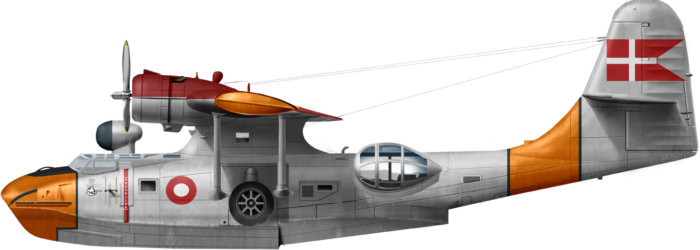
PBY Catalina of the fishery protection squadron in the 1950s.
The lack of large vessels for the task plagued the postwar Danish fisheries inspection in the waters of Greenland and the Faroe Islands. The Naval Air Service soon aquired several CATALINA PBY-5A to remedy the sistuation, from the US and also under help in 1947. Also frigates were setup and provided for effective fisheries inspectionof these distant waters, resulting in several successful operations against illegal fishing. The most notable saw HDMS NIELS EBBESEN (s.g. E. T. Sølling) seizing the English trawler Red Crusader on May 30 1950, with warning shots and then offensive ones to stop the ship, which escaped to Scotland after releasing the prize crew. This became an example of enforcing international law regarding the use of force at sea. For added strength later in the same waters the ALOUETTE III helicopter was procured to Navy Air Force on May 28, 1962, adding more versatility to it. The latter was also deployed for more efficient SAR missions. From 1980, the Westland LYNX replaced it (photos).
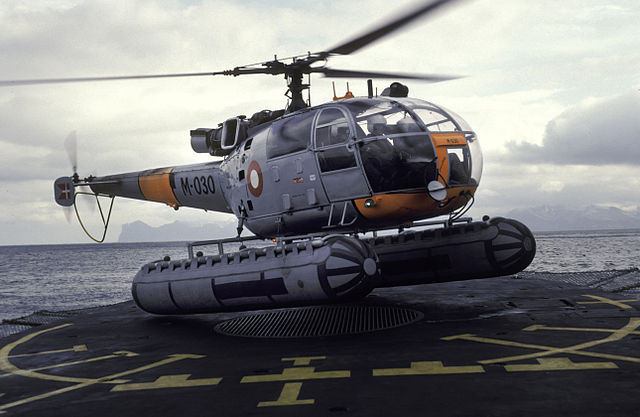
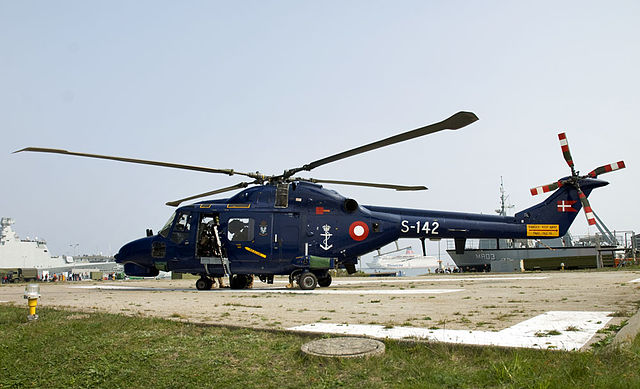
Watch on the Skagerrak
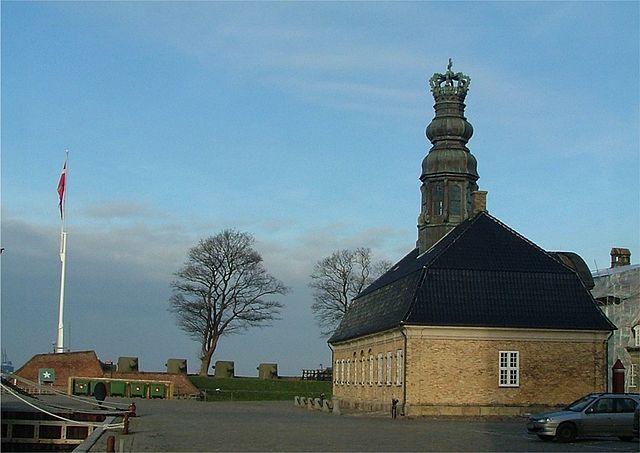
Copenhagen naval base
The entire Cold War saw Denmark the main Soviet Navy’s gateway to the North Sea and Atlantic, for its baltic Navy. Thus responsibility was fully enforced and demonstrated during many Soviet Submersibles attempts to cross the Denmark strait. It should be noted that the only other way was the Kiel canal, under Bundermarine control. There was increased surveillance from Denmark with the daily passage through Danish waters of many ships from Warsaw Pact nations such as Poland as well. However they were allowed to pass anyway, as the Great Belt and Oresund were international waters.
The accepted rules stipulated that only six Warsaw-pact countries vessels were allowed at one time there. Submarines were allowed to pass only if they were on the surface, clearly indicating their nationality. But others tested their ability to do so submerged in a wartime scenario. This resulted in many “close contacts”.
There were collisions between NATO and Warsaw Pact ships as well and in fact both sides constantly looked at each other’s state of readiness. Danish warships often patrolled with their weapons loaded and the crew ready to all option.
Target practice was done often off Sjælland’s Spit. Also on short notice, peacetime exercises could be interrupted by an increased alert state, which happened in the Hungarian and Suez crisis (1956), Cuba crisis (1962), Six-Day war (1967), and Prague Spring events (1968).
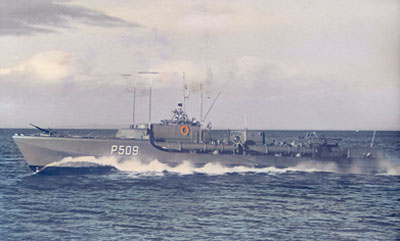
HDMS Hoegen of the Falken class, 1963
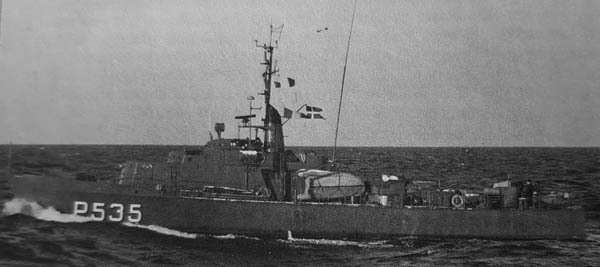
HDMS Nymphen in the 1970s
The Danish navy early typical operations requiring training for minelaying, performed with ships of the Falster class (17 knots, 2,000 GRT) which at the time were the world’s largest minelayers, carrying also some two hunderd eight 900 kg mines. They would have been escorted in wartime by torpedo FACs such as the Søløven-class (54 knits, 158 GRT) and the missile FACs of the Willemoes class (45 knots, 260 GRT). Later was created a “mobile base” the self-sustaining mobile missile battery (MOBA), each truck managing four Harpoon missiles.[11] The Danish intelligence capabilities were also expanded and the Danish submarines trained for very shallow water operations, while a special naval force – the Danish Frogman Corps was created. The naval bases in Frederikshavn and Korsør plus the fortresses at Langeland and Stevns were created through NATO funds in the 1950s. In case of war all Danish combat vessels were assigned to NATO’s Allied Forces Baltic Approaches’s naval command NAVBALTAP.
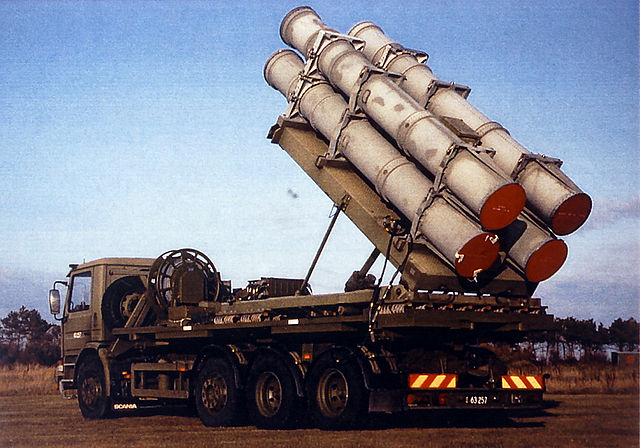
RDN Mobil base (MISBAT) with harpoon missiles.
Danish Naval Bases & Fortifications
Since the early days of the navy, Copenhagen was the main base. The harbor naturally offered the best anchorage and was wode enough to host a sizeable base with academy, arsenal, depots, shipyards, fuel tanks and all facilities required, close to the main center of power. In connection with the expansion of NATO the need for more naval bases arose and at the end of the fifties, it was decided to built a new base in Korsør and Frederikshavn. On May 2, 1960 the first one opened, and on October 2, 1960 the second. Ships started to be distributed between them by specialization, although Holmen in Copenhagen remained the the main naval base and HQ.
To enforce sovereignty within NATO’s frame, the STANAVFORLANT (Standing Naval Force Atlantic) was created, in which Denmark played an essential part. It was placed under command of the Supreme Allied Commander (SACLANT) which had its HQ in Norfolk (Virginia). In 1970, HDMS Peder Skram became symbolocally the first Danish ship tailored to operate with STANAVFORLANT, participating in many exercizes. She was also the first of a the two largest, modern warships ever built in Denmark. Six to eight destroyers supplemented with submarines at times made the STANAVFORLANT, coming from many NATO countries uusually operating, and thus, well familiar with the conditions of the northen Atlantic. Danish frigates and corvettes alternated in many iof these joint operations, increasing cooperation and interoperability over the years 1970-80s. PEDER SKRAM & HERLUF TROLLE, the NIELS JUEL class corvettes all operated in alternance in STANAVFORLANT, ensuring a constant presence of the Danish Navy withing this command structure. From October to December 1972 also the submarine DELFINEN became the first submarine to operate in the Standing Naval Force Atlantic and soon other Danish submarines followed.
On the topic of fortifications, Denmark had its most famous at the entrance to Copenhague, called the Trekroner (‘Three Crowns Sea Fortress’), edified in 1700 and active from 1713 until the 1920s, erected on three old ships of the line sunk to form a basis for a battery, one called Trekroner. The fort saw action during the British attack on Copenhagen in 1807. In 1860 it was strongly enhanced, but in 1934 it was no longer relevant, sold to the Copenhagen harbour services. It was one of three artificial islands created to defend the entrance to Copenhagen’s harbor. Prøvestenen was another, built in 1859–63 under supervision of Ferdinand Meldahl, but discarded in 1922. Hanstholm fortress was another, buuilt by the Germans. Its heavy guns were still relevant in 1945. However they were scrapped in 1951-52 and today, the remains were converted as a museum. A part of the Atlantic wall remained active for a short while, and condemned as being of no use since it was turned towards the West, not the east.
The Faeroe islands were not defended and remained so while both Iceland and Greeland had neutral status.
Main bases:
-Holmen Naval Base
-Frederikshavn Naval Base
-Korsor Naval Base
Minor naval bases:
Marine Station Aarhus (Danish Navy fleet command base)
Marine Station Esbjerg (NATO reinforcements port)
Marine Station Grønnedal in Greenland
Marine Station Thorshavn in the Faroe Islands
Torpedo Station Kongsøre (Frogman Corps and mine divers base)
Lyngsbæk Pier (Naval mines depot)
Coastal fortifications:
-Stevnsfortet at the southern entrance to Øresund
-Langelandsfortet at the southern entrance to the Great Belt
Sea surveillance stations:
-Marine Station Møn
-Marine Station Gedser
-Marine Station Bornholm
Danish transition to missiles
The missile era started for Denmark halfway into the 1970’s as in 1978, the missile FAC (fast attack craft) HDMS NORBY (P545) became the first Danish vessel to be fitted with HARPOON SSM canisters. These became a standard armament for the Willemoes class, but also the next Flyevisken (1990) as well as the 1978 Niels Juel class corvettes. They were also installed on the PEDER SKRAM class frigates during their planned upgrade in 1979-80. In addition, these frigates were also the first Danish warships to be armed with the sea sparrow SAM, giving them a full protection bubble, as they kept their classic artillery asn ASW systems as well. There was however a serious incident on September 6, 1982, when PEDER SKRAM (s.g. Jens L. Winther) made an accident launch of a Harpoon, which eventually ran out of fuel and fell in with fortunately inhabited summer cottages near Lumsås. It made headlines in the local press at the time.
The late cold war
Late 1980s Organization
Organization
-1st Squadron = The North Atlantic Squadron (Danish: ‘InspektionsSkibsEskadren’ (ISE)) with 5 ocean patrol vessels (1 Beskytteren class, 4 Thetis class), 3 ocean patrol cutters (Agdlek class) and 4 icebreakers
-2nd Squadron = The Frigate Squadron (Danish: ‘FreGatEskadren’ (FGE)) with 2 frigates (Peder Skram class), 3 corvettes (Niels Juel class), 14 StanFlex-vessels ( Flyvefisken class) and 6 seaward defence craft (Daphne class, decommissioned in 1991)
-3rd Squadron = The Mine Squadron (Danish: ‘MineSkibsEskadren’ (MSE)) with 4 minelayers (Falster class), 2 cable-minelayers (Lindormen class) and 7 minesweepers (Sund class, decommissioned in 1999)
-4th Squadron = The Torpedo Boat Squadron (Danish: ‘TorpedoBådsEskadren’ (TBE)) with 13 torpedo-/missile boats (8 Willemoes class, 5 Søløven class), 2 oilers (Faxe class) and a truck-detachment with missiles and radars called MOBA
-5th Squadron = The Submarine Squadron (Danish: ‘UndervandsBådsEskadren’ (UBE)) with 6 submarines (3 Tumleren class, 3 Springeren class) and the Frogmans Corps
Transition towards the digital age
The fall of the Berlin Wall in November 1989 signalled a seriof dramatic events, putting a practical end of the cold war, as the dissolution of the Soviet Union made the threat of world war three far less relevant. Denmark’s security politics however were based on NATO’s obligations, and remains so. Budget cuts has been less sensible than in other countries, and naval programs has not been curtailed to the same extent as in some navies, notably the Netherlands. Indeed as of today were can describe it as a small, solid and well balanced navy.
Some observations:
-The three Niels Juel class corvettes were decommissioned in 2009 and scrapped in 2013.
-The whole Willemoes class FAC was decommissioned in 2000.
Organization (2020)

HDMS Lindormen 1965
Since the end of the Cold War, transition took place, from local defence to global operations with less, but larger ships. The defence agreement of 1995–1999 initiated this process seeing Cold War frigates and minesweepers decommissioned and the squadron structure revamped.
-The defence agreement of 2000–2004 was the origin of a larger restructuration, seein more decommissioning. The last Beskytteren class ship was donated to the Estonian Navy (Admiral Pitka). The 4th squadron was disbanded and assets integrated in the 2nd squadron.
Current formations
-1st Squadron with 4 ocean patrol vessels (Thetis class), 3 ocean patrol cutters (Agdlek class) and 3 icebreakers
-2nd Squadron with 3 corvettes (Niels Juel class), 14 StanFlex-vessels (Flyvefisken class), 2 oilers (Faxe class) and a truck-detachment with missiles and radars called MOBA and a new truck-unit MLOG with shops, spare parts, mechanics, etc.
-3rd Squadron = The Mine Squadron (Danish: ‘MineSkibsEskadren’ (MSE)) with 4 minelayers (Falster class) and 2 cable-minelayers (Lindormen class)
-5th Squadron = The Submarine Squadron (Danish: ‘UndervandsBådsEskadren’ (UBE)) with 4 submarines (3 Tumleren class, 1 Kronbrog class – leased Swedish Näcken class) and the Frogman Corps
On 1 January 2006, another reorganisation from DA 2005–2009 abandoned the 95-year-old Danish submarine service and the former four squadrons are fusioned into two squadrons, the first reaffacted to domestic affairs and the second to foreign affairs.
Current organization
–1st Squadron (NB Frederikshavn): Arctic Ocean affairs, maritime patrol in the Greenlandic and Faroese waters, surveillance, SAR and oil spill prevention/recovery (recovery vessel Gunnar Seidenfaden intervened after the Prestige oil spill). Also HDMS Thetis is used for the protection force programme (WFP) at the Horn of Africa.
–2nd Squadron (NB Korsør) for Foreign affairs. International protection force operations, disaster relief, non-combatant evacuations. Also taking part in international standing maritime groups and maritime operations planned by NATO.
–3rd Squadron (NB Frederikshavn): Domestic maritime affairs, territorial waters, patrol, SAR, icebreaking, oil spill operations.
Naval Academy
-Naval NCO and Basic Training School (Danish: Søværnets Sergent- og Grundskole (SSG)) near Frederikshavn
-Danish naval academy (Danish: Søværnets Officersskole) at Holmen, Copenhagen
-Naval specialist schools (Danish: Søværnets specialskoler):
Naval Warfare (TAK) at Frederikshavn and Holmen, Naval Weapons (VBK) at Sjællands Odde, Technical (CT) at Holmen, Damage Control (SHK) near Frederikshavn, Diving (CD) at Holmen, and the Naval Centre for Sergeant and Maritime Education.
Logistics
The Naval Operational Logistic Support Structure (OPLOG) is based in Frederikshavn and Korsør, plus naval stations. They are tasked to provide logistic support fhe the fleet through the OPLOG organization, maintenance and repair. There is an additional support to civilian agencies like the Danish maritime police and United Nations. Naval Base Korsør area of operations is limited to Zealand, Funen, Bornholm waters. For Frederikshavn, the area is Jutland, Greenland and the Faroe Islands. They also provide exceptional support during international operations and must exercise for possible wartime or crisis scenarios. Smaller stations had more limited support, like in Holmen and Kongsøre.
Post cold war Operations
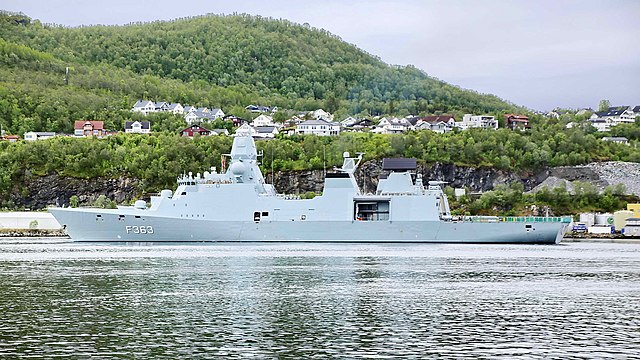
Today’s large multirole frigate Niels Juel (F363) in Harstadt Port.
- 1990–91 Operation Desert Shield: the frigate Olfert Fischer (F355) was deployed.
- 1993–96 Operation Sharp Guard: Niels Juel (F354) is deployed.
- 1999 Operation Allied Harvest, HDMS Lindormen (N43, of Lindormen class) is sent there
- 29 November 2002 until 4 March 2003: Operation Prestige Cleanup, HDMS Gunnar Seidenfaden (A561, Gunnar Thorson class)
- 2001–2002: Operation Active Endeavour, HDMS Olfert Fischer (F355) and HDMS Sælen (S323, of the Tumleren class)
- 2003: Operation Active Endeavour, HDMS Viben (P562) and Ravnen (P560) both of the Flyvefisken class
- 2003: Operation Iraqi Freedom, HDMS Sælen S323 and Olfert Fischer
- 2006–08: UNIFIL, Lebanon: Glenten Ravnen P560 and the frigate Peter Tordenskiold
- 2007: Standing NRF Maritime Group 1, Olfert Fischer
- 2008: WFP protection force, Horn of Africa, HDMS Thetis
- 2011 Operation Ocean Shield: HDMS Absalon and Esben Snare, Iver Huitfeldt are deployed
Danish Navy Cold War – Articles:
- Hvidbjornen class Frigates (1962)
- Frigate Beskytteren (1976)
- Peder Skram class Frigates (1965)
- Thetis class frigates (1989)
- Bellona class corvettes (1955)
- Niels Juel class corvettes (1979)
- Delfinen class submarines (1958)
- Narhvalen class submarines (1970)
- Bille class Torpedo Boats (1946)
- Flyvefisken class Torpedo Boats (1954)
- Falken class Torpedo Boats (1960)
- Soloven class Torpedo Boats (1962)
- Willemoes class FAC (1976)
- Flyvefisken class FAC (1989)
- Daphne class Patrol Boats (1960)
- Danish Minelayers
- Danish Minesweepers
The Danish Navy in 1947
Order of Battle 1947:
-Holger Danske class: With Niels Ebbesen, these were two former River class Frigates, purchased 1945 and which became TS, stricken in 1959 and 1963 respectively.
-Corvette HDMS Thetis: A former Flower class purchased 1945, stricken 1963.
-Five TBs: Havkatten (1919, str 1948), German TBs T4, T19 stricken 1950-51, Two 800 tons Najaden class, stricken 1966.
-4 Havmanden class submarines (1937-40): Discarded 1949-50.
-3 ex-British U class subs. Springeren, Storen, Saelen returned 1957-58.
-3 Minelayers (Lindormen, two Lalland class): NATO 39,40,41, stricken 1969-74
-14 Minesweepers (Narhvalen, 3 Söbörnen class, 9 MS class); All stricken 1949-71.
-21 ex German MR class minesweepers, stricken 1949-57.
-20 ex-ME class minesweepers (British, on loan), returned 1948-50.
-5 MSK vessels, 3 ML motor launches, the first stricken 1969-73, second 1956-69.
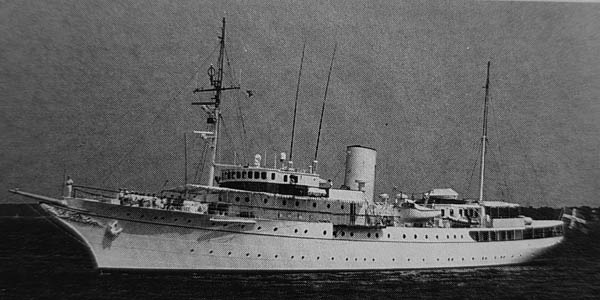
The Royal Yacht Dannebog in 1994. Built in Copenhagen NyD in 1931, refitted in 1979-80 with a more modern, silent machinery. She was armed with two 37 mm guns and mobilizable in wartime with the pennant A 540. Quickspecs: 1130 tons, 75 x 10.9 x 3.7 m, 2 shafts diesels 1800 bhp, 14 knots, crew 57.
The Danish Navy in 1965 Order of Battle
HUITFELDT class torpedo boats (1947)
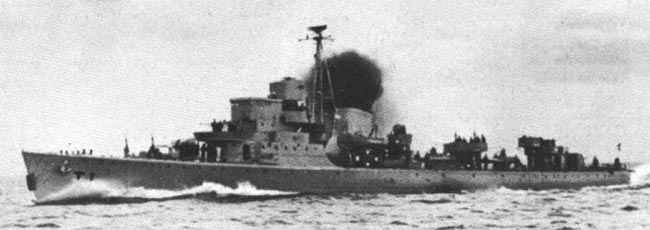
Two ships which were a massive improvement over the previous classes, more in line with contemporary German torpedo boats. They were laid down at Orlogsværftets in mid-1942 although the project was already approved by the Admiralty in 1939. The construction was authorized by the Germans in the hope they could later bolster the Kriegsmarine. Indeed after August 1943 breakdown, the Germans seized them, and the Huitfeldt and Villemoes became in German service KMS Nymfen and Najaden, however, construction stalled and stopped completely.
It was in between decided by the Germans authorities that the initial 533 mm torpedo tubes would be locally replaced temporarily by the 450mm banks previously removed from the Dragen class. In May 1945 they were captured intact, with barely any work done since 1943.
They were completed by the Danese with some modifications and launched in 1947. At that time, the design was revised with two 105/42 KM40 guns, two 40/60 Bofors M36 AA, six 20 mm/60 Madsen M41 AA, and two triple banks of 450 mm TT, 2 DCT, and 60 mines. The design was revised once more in 1951, they received the intended two triple 533 mm TT banks, 2 DCT, and 2 DCR plus navigational radar. In 1958 they were reclassed as patrol boats and discarded in 1966.
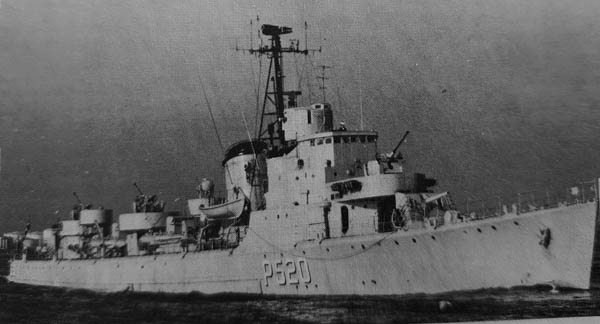
These ships displaced 782 long tons up to 890 long tons (900 t) fully loaded, 86.3 m (283 ft) long overall by 8.33 m (27 ft 4 in) and 3.51 m (11 ft 6 in) in draught, and were propelled by Geared steam turbines rated for 16,000 kW (21,000 shp), enabling them to reach 35 knots (65 km/h; 40 mph). Crew was 92.
Ebern Snare class
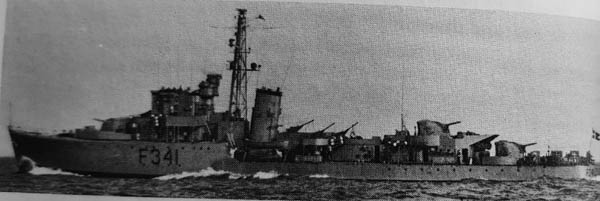
HDMS Esbern Snare in 1962
Ebern Snare, Rolf Krake, and Valdemar Sejr were ex-Hunt type 2 ASW frigates, acquired in 1953. They were reconstructed in 1953-54, gaining a type 271 (for some) radar, a type 285 and type 291 radars, and a type 128 sonar. They were armed with three twin 4-in/45 Mk19, three 40 mm/70 Mk7 Bofors AA, two Depht Charges Throwers (DCT) and tw racks for 70 DCs in reserve. The original ships were built in 1940-41 A. at Stephens, Linthouse, and Swan Hunter, Wallsend, named HMS Blackmoor, Calpe, Exmoore. They notably had a new lattice mast typical of 1945 British ships. They were stricken in 1962 and 1966.
Bellona class corvettes (1955)
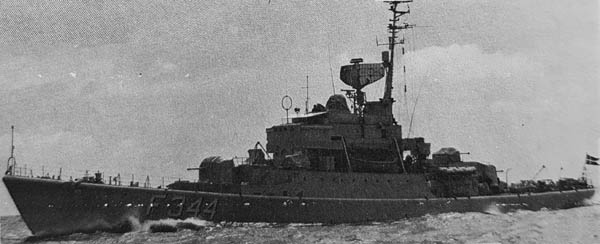
Bellona, Diana, Flora, Triton
These were Italian-built vessels funded for transfer by MDAP. They were sister-ships of the Albatros class, at first classified as sub-chasers. From 1954 they became corvettes, but still with a Frigate pennant, F344 Bellona, F345 Diana, F346 Flora, F347 Triton. Laid down 1954, launched 1954-55, completed 1955-57. They were propelled by two Ansaldo steamm geared turbines, powered by two Fiat diesels 409T. After about thirty years of service for some they were stricken from 1974(Diana), 1978(Flora) to 1981(Bellona and Triton).
Bellona class specifications |
|
| Dimensions | 79 m x 9.6 x 3m (259 x 32 x 9 feets) |
| Displacement | 800 t standard, 900 FL |
| Propulsion | 2 shafts turbines+diesels, 4,400 bhp |
| Speed/Range | 20 knots, 3,000 nmi/18 kts |
| Armament | 2×3 in (76 mm) OTO), 1x 40 mm, 2 Hedgehog, 2 DCT |
| Sensors | NWS-1 radar, and CWS-1, sonar QCU-2 |
| Crew | 109 |
Delfinen class submarines (1958)

Delfinen, Spaekhuggeren, Tumleren, Springeren
These were the first Danish-designed and built submarines since WW2. Springeren, the lead ship was funded by US “offshore” funds. They were laid down in Copenhagen NyD in 1954 for the first two, 1956 and 1962, launched 1956-63 and completed 1958-64. Replaced by the Kobben class and discarded 1981-89. They were powered by two Burmeister & Wain 12 cyl. in V diesls and Brown Boveri electric engines giving the same power above and underwater, and same speed. They also used an active and a passive sonars, new for Danish submarines. After joining NATO Denmark was assigned the defence of the Baltic Sea and thus required submarines. The Delfinen class were its first (and last) cold war submarines, designed locally at the Naval Shipyard in Copenhagen. The fourth one in the class, HDMS Springeren, was financed by MDAP wit the pennant SS-554. The class remained in service until the 1980s, replaced by former Norwegian Kobben-class in 1986. They were complemented by two German designed but Danish built Type 205, the Narvhalen class.
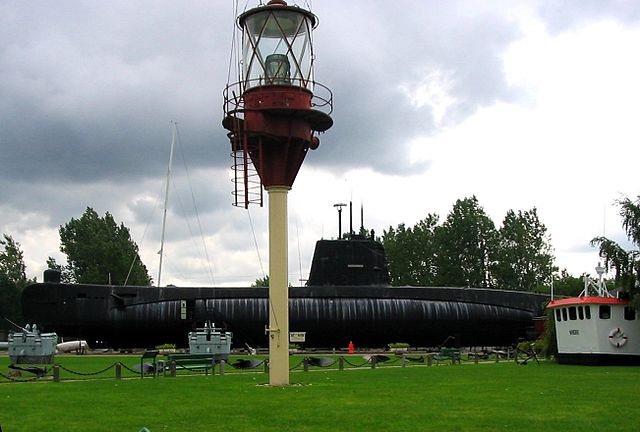
Springeren is now preserved as a museum ship at the Naval Museum in Aalborg.
Delfinen class specifications |
|
| Dimensions | 54.5 m x 4.7 x 4m (178 x 15 x 13 feets) |
| Displacement | 595 t standard, 643 t FL |
| Propulsion | 2 shafts Diesels+electric motors 1200/1200 shp/bhp |
| Speed/Range | 15/15 knots, 4,000 nmi/8 kts |
| Armament | 4x 533 mm Bow (21 in) |
| Crew | 33 |
Bille class Torpedo Boats (1946)

HDMS Bille, Buhl, Hammer, Holm, Krabbe, Krieger
Authorized in 1941, these very classic torpedo boats were planned in 1942, but not ready for production, which was postponed until 1945. Construction resumed and the six ships were launched between 1946 and 1948. They were reclassified as patrol boats in 1952 witn new pennants, P-570-575, and rebuilt between 1953 and 1955 with their TTs removed and modern ASW weapons installed. They were all stricken in 1960.
Bille class specifications |
|
| Dimensions | 64 m x 6.4 x 2.3mm (210 x 21 x 7 feets) |
| Displacement | 392 tons standard, 400 tons FL |
| Propulsion | 2 shafts Atlas turbines 6,900 bhp |
| Speed/Range | 29 knots, ?nm |
| Armament | 3x40mm AA, 2x 20 mm AA, 2x3TTs 356 mm (15 in), replaced by Hedgehog, 2 DCT |
| Crew | 65 |
Flyvefisken class Torpedo Boats (1954)
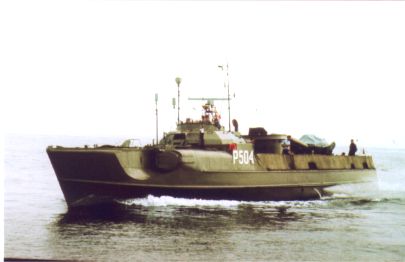
Flyvefisken, Hajen, Havkatten, Laxen, Makrelen, Støre, Sværdfisken, Glenten, Gribben, Lommen, Ravnen, Skaden, Viben.
These were basically modernized S-Boats built in Frederikssund Ship Yard, launched in 1954-55 and comploted at Naval Dock Yard in Copenhagen. They were not much larger than ex German S-Boats, with a 132.2 tons displacement,
35.90 m long, propelled by three Mercedes Benz diesel engines 9,000 Hps, but also the same range at 760 nautical miles at 32 knots, for a max speed of 42.8 knots. They were armed with a 40 mm Mk M/48 LvSaand a 20 mm Mk M/42 LvSa AA guns, two internal tubes (buried in the hull nose) of 533 mm with two torpedoes in reserve, and two 51 mm Rocket Launcher M/48 III for illumination. They were decommissioned in 1975, pending the arrival of missile FACs.
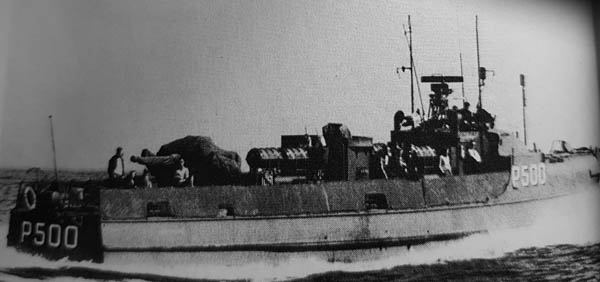
class specifications |
|
| Dimensions | 35.9 m x 5.5 x 2.10 m () |
| Displacement | 132.2 t standard |
| Propulsion | 3 shafts diesels, 9,000 bhp |
| Speed/Range | 43 knots, 700 nmi/32 kts |
| Armament | 2 TTs, 1x 40mm, 1x 20mm AA, see notes |
| Crew | 22 |
Falken class Torpedo Boats (1960)
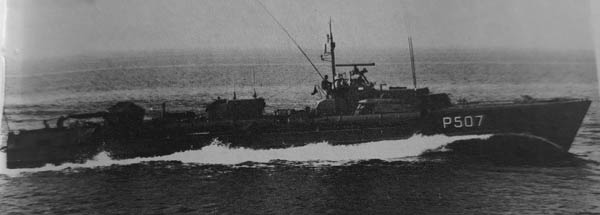
Falken, Glenten, Gribben, HØgen
These ships were built at the Naval Dock Yard, Copenhagen as improved Flyvefisken class. Falken was laid down on November 1, 1960, launched on December 19, 1961 and commissioned on October 4, 1962. Armament comprised four torpedo tubes facing forward, but also two 51 mm Rocket Launcher M/48 III for illumination, and there were rails for mines on the deck. AA defence comprised a 40 mm Bofors forward and 20 mm Oerlikon aft. They were active for not very long, decommissioned in the late 1970s with the arrival of the Willemoes class missile FACs.
class specifications |
|
| Dimensions | 36.34 m x 5.42 m x 2.08 m |
| Displacement | 132.5 t standard |
| Propulsion | 3 shafts MTU Diesel Engines 9,000 shp |
| Speed/Range | 43.1 knots, 1,420 nmi/17.6 kts |
| Armament | 4 TTs, 2 RLI, 1x40mm, 1×20 mm AA |
| Crew | 23 |
SØLØVEN class Torpedo Boats (1962)
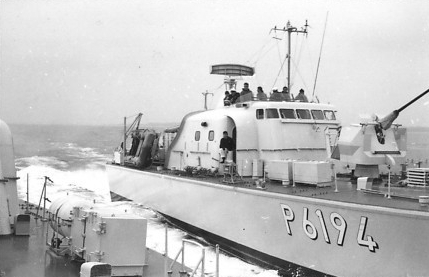
Søløven, Søridderen, Søbjørnen, Søhesten, Søhunden, Søulven
Denmark purchased six Søløven-class fast patrol boats (FPB)s based on the Britsh Brave-class, with a larg hull and 3-Proteus powerplant, mixed with wooden construction as in the Ferocity class. They were armed with two 40 mm Bofors guns, four fixed forward torpedo tubes. Søløven and Søridderen came from Vosper, Søløven being paid by the US and named PT-821 and the rest under license by the Royal Dockyard in Copenhagen. All went into reserve in 1988, replaced by the Flyvefisken-class in 1992 and sold for BU.
class specifications |
|
| Dimensions | 79 m x 9.6 x 3mm (259 x 32 x 9 feets) |
| Displacement | 800 t standard, 900 FL |
| Propulsion | 2 shafts turbines+diesels, 4,400 bhp |
| Speed/Range | 20 knots, 3,000 nmi/18 kts |
| Armament | 2×3 in (76 mm) OTO), 1x 40 mm, 2 Hedgehog, 2 DCT |
| Crew | 109 |
Links & resources – The Royal Danish Navy 1947-90
On navalhistory.dk
On navypedia.org
The Danish Navy wk
naval-technology.com
Official forsvaret.dk
On navalnews.com
Same but latest articles
On seaforces.org
The thetis class on naval-technology.com
On helis.com
whitepaper increase on defensenews.com
On usni.org
Danish Naval bases cold war
The Danish Navy cold war 1990 Order of Battle
Hvidbjornen class Frigates (1962)
Hvidbornen, Vaedderen, Ingolf, Fylla
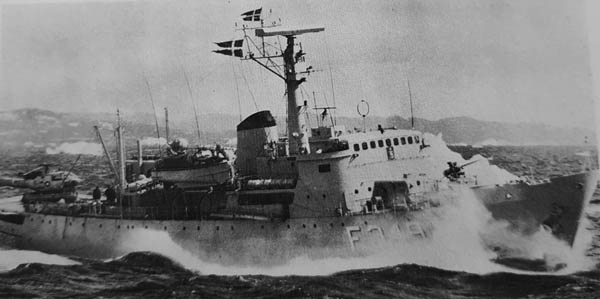
This ship class were started officially as “inspection vessels”, ordered in 1960. They were tailored for sishery protection in Greeland, the Faeroe and North sea waters. They carried first an Alouette III helicopter replaced in the 1980s by a Lynx. About 2/5 of her lenght was used by the hangar and fight deck. The class has a sturdy superstructure and hull, tailored for heavy weather. Armament was limited to a light gun and depht charge throwers. She also had a surveillanvce radar, navigation radar able to detect icy formations, and sonar. They were launched in 1961-62, F348 at Aarhus Flydedok, F350 at Svendborg and the two others at Aalborg. They were stricken from the lists in 1991-92.
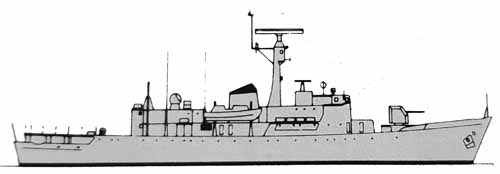
class specifications |
|
| Dimensions | 72 m x 11.5 x 5m (238 x 38 x 16 feets) |
| Displacement | 1,345 t standard, 1,650 FL |
| Propulsion | 1 shaft 4x GE diesels, 6,400 bhp |
| Speed/Range | 18 knots, 6,000 nmi/13 kts |
| Armament | 3-in Bofors DP, 2 DCT, 1 Helicopter |
| Sensors | Radar CWS-1, NWS-1, Sonar M26 |
| Crew | 85 |
Frigate Beskytteren (1976)
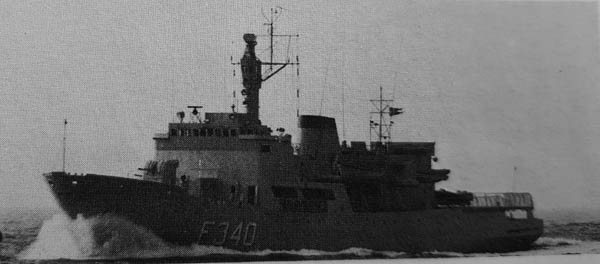
A single improved “inspection vessel” but still rated as frigate despite her small dimensions (pennant F340), built in Aalborg, designed and equipped especially for Greenland service alone. She had a slightly longer hull but higher prow and better seakeeping capabilities in heavy weather, a taller bridge, no ASW weapons and better electronic and navigation equipments. She also had a new powerplant with still a single shaft but powered by three Burmeister & Weign “Alpha” diesel engines whioch developed a total of 7440 bhp for 18 knots and same range. Thanks to more automation the crew was reduced to 60 officers and sailors. At some point like the Hvidbornen class, she received the same radome AWS-6 radar. She was acquired by Estonia on 24 January 2000 and renamed Admiral Pitka, until decommissioned in 2013. She was scrapped in Tallinn in 2014.
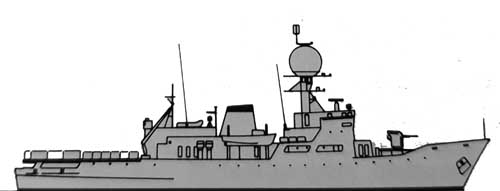
Beskytteren class specifications |
|
| Dimensions | 74.4 m x 12.5 x 4.5m (244 x 41 x 15 feets) |
| Displacement | 1540 t standard, 1970 FL |
| Propulsion | 1 shaft, 3x B&W diesels, 7,440 bhp |
| Speed/Range | 18 knots, 6,000 nmi/13 kts |
| Armament | 3-in (76 mm Bofors), 1 helicopter |
| Crew | 60 |
Peder Skram class Frigates (1965)
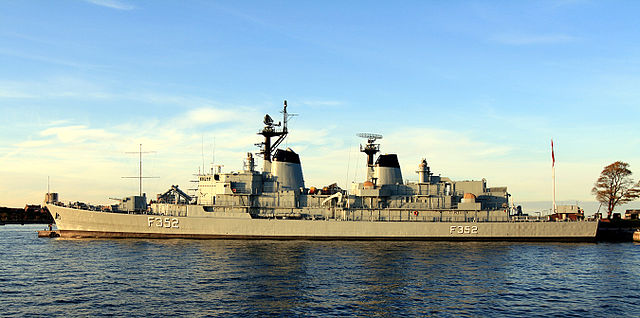
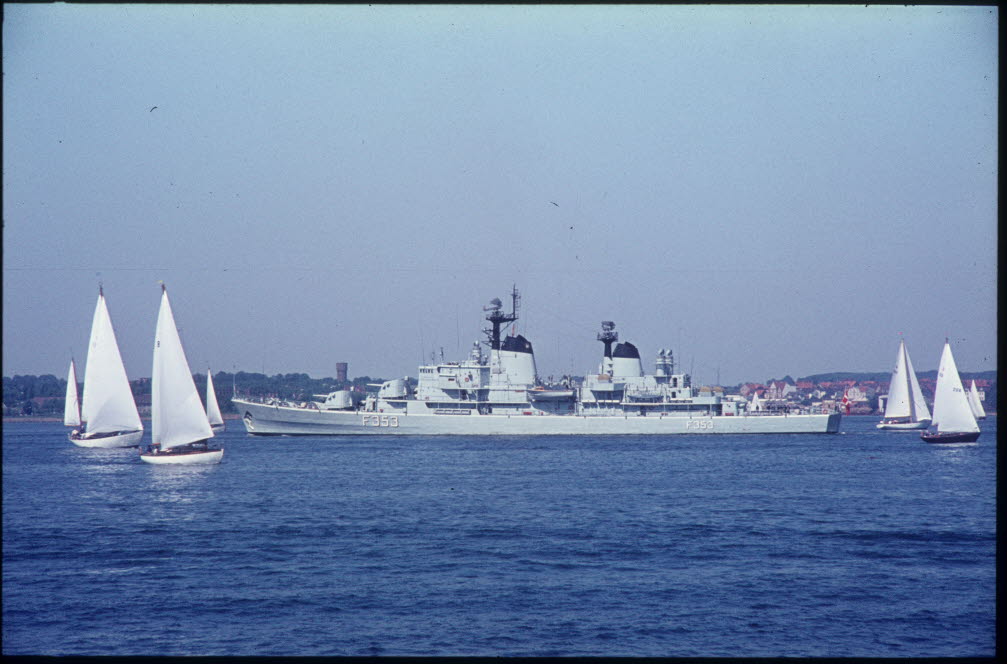
F352 Peder Skram, F353 Herluf Trolle
Certainly the best, largest and best known cold war Danish Frigate class. These were the main surface combatants of the Danish Navy until the arrival of the Thetis class in 1990. Still a relatively small vessel at 2,200 tonnes, she was well armed to answer all threats and was modernized in the 1970s with a full missile upgrade, SAM and SSMs as well as the electronics. Both were designed in Denrmark and built at Helsingör, but financed by US “offshore” funds. They were designed as conventional gun vessels, with two twin turrets forward, superfiring, of the standard 5-in/38 US pattern (127 mm) DP, four Bofors 40 mm AA, aft and on the sides, under cover, and a single triple TT bank in the cebter, in between the funnels, with 21 inches torpedoes, plus deep charges racks aft.
The original design however had the Terne ASW missile provided, but development was still ongoing in 1963 and both vessels were ultimately started without. They were completed in 1966 and 1967. In 1976-78 they were completely modernized, with the aft turret removed, and the TT removed. Instead of turret ‘B’, two canisters with Harpoon SSMs were installed, a sea sparrow SAM aft (octuple launcher), two triple 324 mm ASW homing torpedoes on the broadsides, main deck fring Swedish wire-guided models. The electronics was also modernized. In 1982, Herluf Troll suffered a massive fire but was repaired and recomm; the next year. The first was in reserve from 1987, stricken but preserved as a museum ship later, while Herluf Trolle was BU in 1995. They were a “busy”, design overloaded as the German contemporary Hamburg class.

Peder Skram class specifications |
|
| Dimensions | 113.6 m x 12 x 4.3m (396 x 39 x 14 feets) |
| Displacement | 1,540 t standard, 1,970 FL |
| Propulsion | 2 shafts CODOG, MTU diesels+GE turbines, 44,000 shp |
| Speed/Range | 32 knots, 2500 nmi/18 kts |
| Armament | 2×5-in, 4x40mm, 1×3 21-in TTs, DCs |
| Sensors | CWS-2/3, NWS-1/2 radars, Mk66/91 FCS, M26 sonar |
| Crew | 200 |
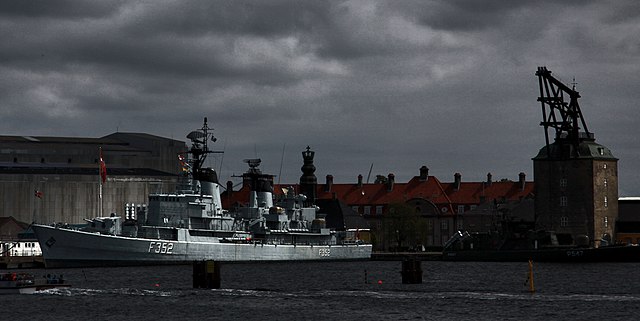
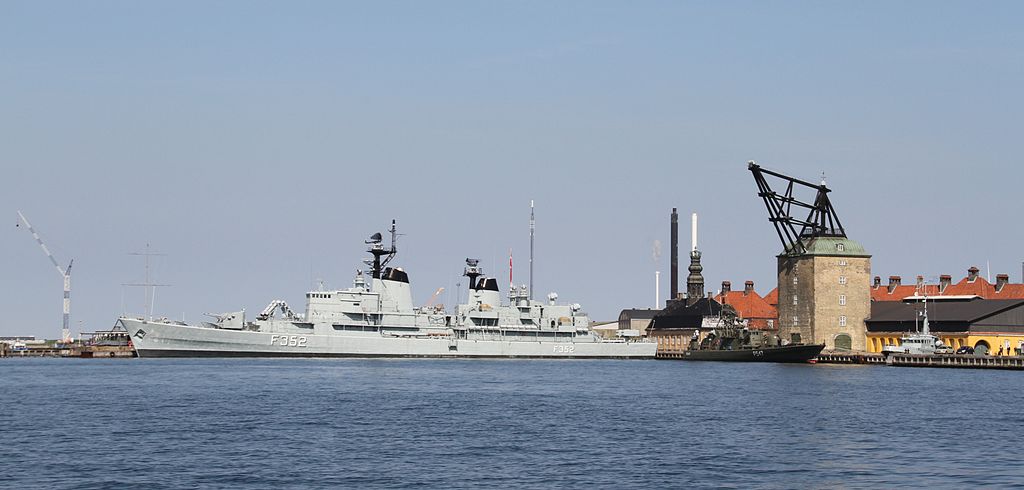
In the Copenhaguen Museum
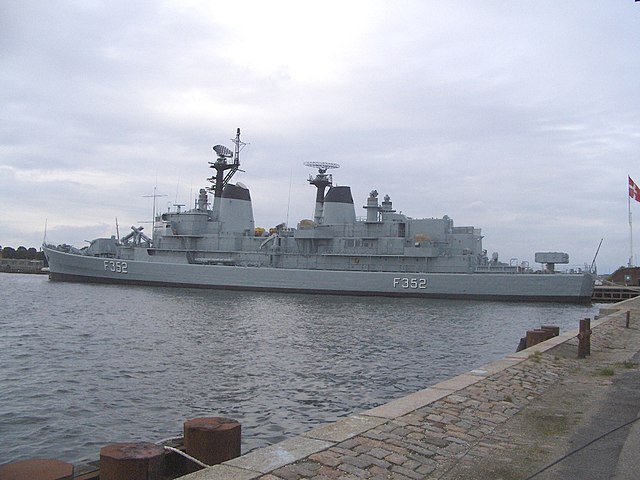
Thetis class frigates (1989)
Thetis, Triton, Vedderen, Hvidbjornen
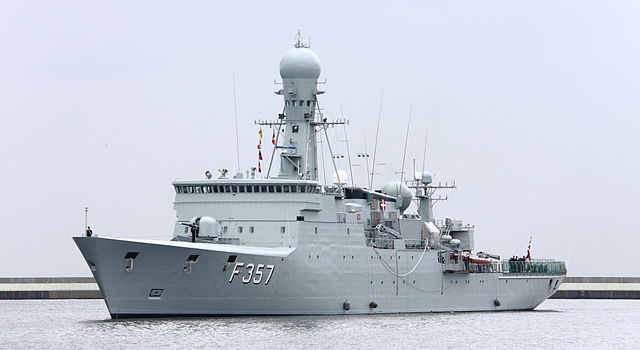
The “stanflex 2000” design ordered in October 1987 to replace all previous frigates with a more modular and evolutive design. They were used for fishery protection and survey duties, but Thetis was also used as an oil survey ship off Greenland, leased to the company Nunaoil cons. They were built with a large hangar and flight deck for a Sea Lynx helicopter. They were conventionally armed and only equipped with Burmeister & Wain 12V 28/32 diesels, but the program development in the 1980s was much more ambitious as they would have been armed with two quad canisters with Harpoon SSMs, and two octuple sea sparrow SAMs. Near post-cold war financial difficulties curtailed this plan. All four were built in new facilities at Svensborg, laid down in 1988-91 and completed about a rate of one per year. In 2016 she adopted a MH-60R as new helicopter. These ships are currently making the bulk of the Danish Navy surface fleet. They are intended to stay in service until 2030 at least due to their upgrade capabilities. Automation largely reduced the crew (more than half) compared to the Peder Skram class.

Thetis class specifications |
|
| Dimensions | 112.5 m x 14.4 x 6m (369 x 47 x 19 feets) |
| Displacement | 2,600 t standard, 3,500 FL |
| Propulsion | 1 shaft 2x B&W diesels 12,000 shp |
| Speed/Range | 32 knots, 2500 nmi/18 kts |
| Armament | 1×3-in (76 mm OTO), 1x20mm AA, 2 DCR, 1 helicopter |
| Sensors | Mil 009, FR 1505, AWS-6, sonar CTS-36, Salmon VDF, ECM Sabre, Scorpion jammer |
| Crew | 61 |
_in_Nuuk_Greenland.jpg)
Niels Juel class corvettes (1979)
Niels Juel, Olfert Fischer, Peter Tordenskjold
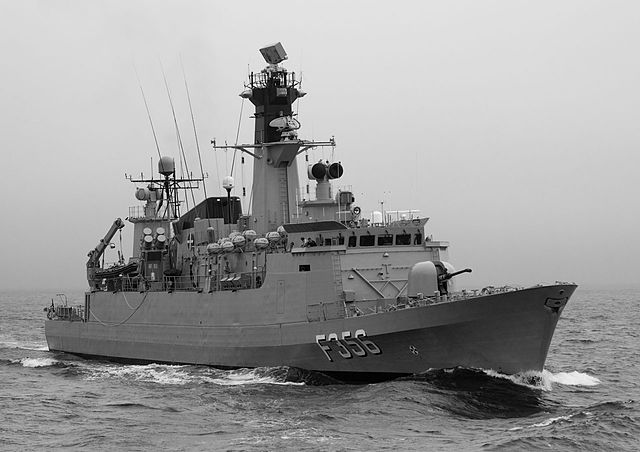
Three small ships designed in the 1970s, ordered in 1975 and interesting by its international mix of armaments, propulsion and systems. They were missile vessels, heavily armed for a small package and relatively fast. The powerplant for example comprised a CODOG arrangement with a single German MTU 20V 956 diesel engine procuring 4800 bhp for 18 knots and a General Electric LM 2500 Gas turbines procuring 12,400 shp. For a 1190 tonnes standard design, the Gas Turbine gave 28 knots by itself, so more than 30 knots combined. The main gun forward was an Italian OTO Melara “super rapido” 76 mm gun, but she also had an American octuple sea sparrow aft and two quad canisters of Harpoon SSMs abadft the funnel. Electronics are British and Dutch. Due to the small designs, two systems were not installed: An ASW suite with two acoustic TTs and sonars, and in 1991 the American Rolling Air Frame SAM system with two 10-rounds system per ship, which competed against the French SADRAL SAM and British VISRAD/Sarstreak. Technically replaced by the three 6,640 tons Iver Huitfeldt class (2010) which reused their armaments and systems from the Niels Juel-class corvettes and Flyvefisken-class patrol vessels.

Niels Juel class specifications |
|
| Dimensions | 84 m x 10.3 x 4m (275 x 34 x 13 feets) |
| Displacement | 1,190 t standard, 1,320 FL |
| Propulsion | 2 shafts CODOG, 1 diesel, 1 turbine 23,000 shp |
| Speed/Range | 32 knots, 2,500 nmi/18 kts |
| Armament | 1x 3-in (76 mm OTO), 1×8 Sea Sparrow SAM, 2×4 Harpoon, DCs |
| Sensors | AWS-5, Skanter 009, Philips 3cm, 9LV-200, %k91 mod1, Sonar Ms26 |
| Crew | 90 |
Narhvalen class submarines (1970)

Licence-built Type 205 submarines built in Copenhagen: S320 Narhvalen, S 321 Nordkaperen. Laid down in 1965-66, launched 1968-69 and completed in 1970. Specs 370/500 tonnes, 44.5x 4.6 x 3.8 m, 1 shaft 2x Mercedes Diesels, 2 electric motors 1,500/1,500 bhp, 12/17 knots. Eight 533 mm (21 in) in the bow, actove and passive sonars, crew 22.
Quickspecs: 419/455 t tons, 44.30 x 4.59 x 3.80 m, prop 2x 440 kW (590 hp) Mercedes-Benz 4-stroke V12 diesel engines each coupled to a BBC generator, 1,100 kW (1,500 hp) SSW electric motor, 10/17 knots, Range 3,950 nmi (7,320 km; 4,550 mi) at 4 knots surfaced, 228/4 kts submerged, tested at 100 m (330 ft) depht, crew 4+18, armed with 8 × 533 mm (21 in) bow TTs, also magnetic mines.
Tumleren class submarines (1970)
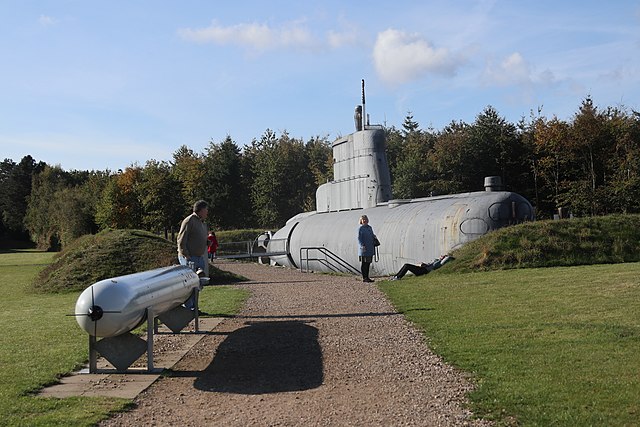
Another version of the popular German Type 205 was the Norwegian Kobben class (also known as Type 207) a customized version. Fifteen were built for use by the Royal Norwegian Navy in the 1960s, seeing service with Denmark and Poland, all withdrawn from service in the three countries, the last in 2020. The Kobben class will be treated as a standalone post.
Quickspecs: 435/485 t 47.2 x 4.7 x 3.8 m, prop 2 MTU 1,100 hp (820 kW) diesels+ 1,700 hp electric motor, 10/17 knots max range 4,200 nmi/8 kts, max depht 180 m, crew 24, 8x 533 mm (21 in) bow TTs compatible with NATO T1, Mk-37 Mod 1/2, Tp 61, Tp 612, Tp 613.
Willemoes class FAC (1976)

Bille, Bredal, Hammer, Iver Huitfeldt, Krieger, Norby, Rodsteen, Sehested, Suenson, Peter Willemoes
The Willemoes-class missile boat was a Royal Danish Navy class of fast missile boats serving from late 1970s until 2000.[1] Designed by Orlogsværftet, in conjunction with the German yard Lürssen, the Willemoes class could achieve a maximum speed in excess of 40 knots (74 km/h; 46 mph). Their weapons consisted of one 76 mm (3 in) OTO Melara gun and combination of RGM-84 Harpoon missiles and torpedo tubes. When the full assortment of eight Harpoons was carried, two 553 mm (22 in) torpedo tubes were carried as well. With Harpoons removed, up to four torpedo tubes could be mounted. The guided missile boat HDMS Sehested is now a museum ship at Holmen.
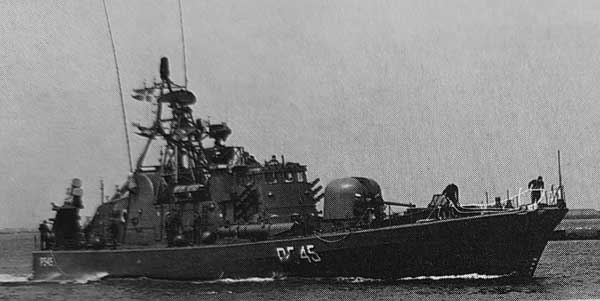
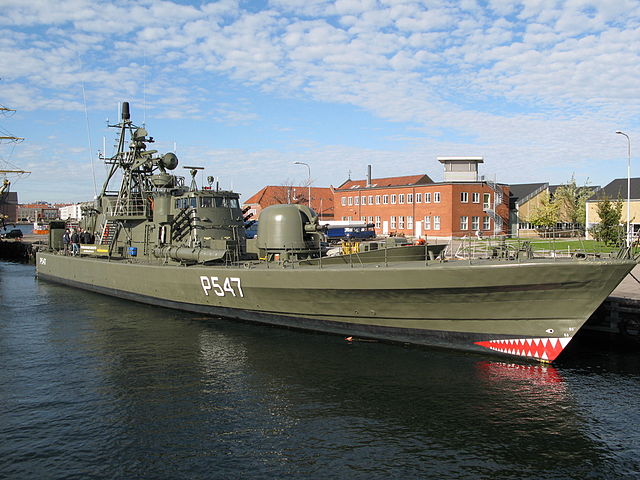
Willemoes class specifications |
|
| Dimensions | 44/46 x 7.4 x 2.2m (144 x 24 x 7 feets) |
| Displacement | 240 t standard, 260 FL |
| Propulsion | 2 shafts CODOG, 3 RR Proteus GS+3 GM Diesel 12,750/800 hp |
| Speed/Range | 40 knots, 2,000 nmi/12 kts |
| Armament | 1x 3-in (76 mm OTO), 2×2 Sea Harpoon, 2x 533mm TTs, 6 RFL, mines |
| Sensors | NWS-3, 9LV-200 |
| Crew | 24 |
Flyvefisken class FAC (1989)
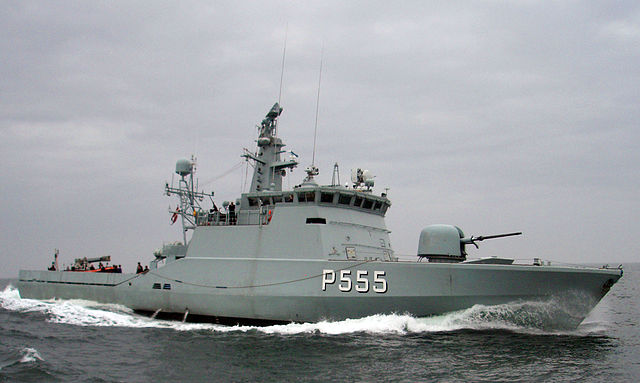
Hajen, Havkatten, Laxen, Makleren, Storen, Svaerdvisken, Glenten, Gribben, Lommen, Ravnen, Skaden, Viben, Soloven
The Flyvefisken class were designed at the very end of the cold war to replace several types at once: The torpedo boats of the Søløven class, coastal minesweepers of the Sund class and seaward defence craft of the Daphne-clas, thanks to an innovative modular design known as StanFlex: The standard hull received containerised weapons and system, allowing to rapidly change roles, with a conversion done in 48 hours. The new ships could be configured to be therefore used for Surveillance/pollution control, Combat, Mine countermeasures/minehunter and Minelayer tasks. In addition they were propelled by a CODAG arrangement, with a pair MTU 16V396 diesels and a single Fiat-General Electric LM-500 gas turbine.
These containers are 3.5 by 3 by 2.5 m each (11.5 ft × 9.8 ft × 8.2 ft). One in is the foredeck the other on the quarterdeck. Construction used sandwiched fiberglass with a core of PVC cell foam. This reduces maintenance costs so much construction of additional vessels was made over 20 years. To replace the Søløven boats capable of 54-knot, the Flyvefisken had their Harpoon missiles. Replacing the wood and bronze Sund class, the Flyvefisken also used non-magnetic composites and the latest tech as minehunters with their side-scan sonar and ROV not even available at the time. They also can be fitted with depth charges and anti-submarine homing torpedoes. The lead ship was laid down on 15 August 1985, launched on 26 April 1986 and commissioned on 19 December 1989. Seven ships were made of the Series I, until 1992, then six of the Series II (1992-96) and the Soloven, sole Series 3 in 1996.
In patrol ship and MCM configuration (OPVs) they carried an OTO Melara 76 mm/62 rapid fire gun plus two heavy Browning machine guns and in FAC configuration, two twin canister Harpoon SSMs, plus the same 76mm and two 533mm (21 in) torpedo tubes.
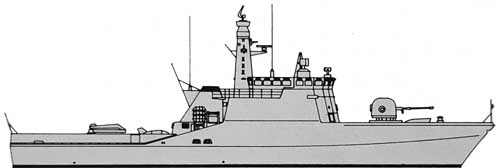
Flyvefisken class specifications |
|
| Dimensions | 54 m x 9 x 3m (177 x 29 x 9 feets) |
| Displacement | 320t standard, 380t ?FL |
| Propulsion | 3 shafts CODAG, 1 Gas Turbine+2 diesels, 5,680/6960 hp |
| Speed/Range | 35+ knots, 2,000 nmi/18 kts |
| Armament | 1x 3-in (76 mm OTO), 2×12.7mm HMGs |
| Sensors | AWS-6, Terma Pilot, Sonar TSM2640 hull, ECM, jammer, decoy |
| Crew | 17-19 |
Daphne class Patrol Boats (1960)
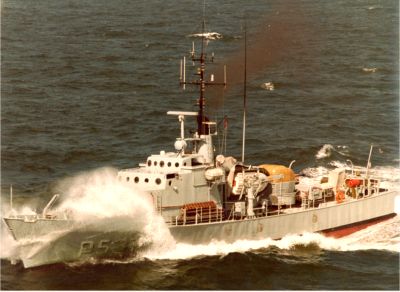
HDMS Havfruen 1961
DAPHNE, DRYADEN, HAVMANDEN, HAVFRUEN, NAJADEN, NYMFEN, NEPTUN, RAN, ROTA
These nine ships (pennants P530-538) were constructed at Naval Dock Yard, Holmen, based of the British FORD Class patrol vessels. The first eight were built under the joined Danish-American Cost Sharing Programme, five paid for by the USA and the three left by Denmark while the ninth was a purely Danish project. They were originally painted in olive green like the Fast Patrol Boats but reverted to standard light grey in 1980-1984. They were discarded in 1989-91, P532 HAVMANDEN in 1978 after an accident. They were identical but the late serie P534-P538 were just 4 tons heavier.
Quickspecs: 2 Maybach Diesel engines MD655/18/1,800 Hps and a later cruising Foden Diesel engine FD6 Mk.III (115 Hps), 2 Propellers, plus an additional mounted after 1970 for cruising, with the Folden Diesel. Range 638/670 nautical miles, top speed 20.56-22.33 kts. Armed with a single 40 mm Machine M/48 two 7.62 mm LMGs, 2 DCM, 2 DCL (32), 6 mines, a 51 mm Rocket Launcher (1986-87, replaced by a 20 mm Machine Gun M/42 LvSa). Crew: 23.
Danish cold war Minelayers
Beskytteren class
The two ex-USN LCM-390 and 392 of 1944 were transferred after reconstruction as minelayers in the USA. HDMS Beskytteren and Vindhunden were acquired in 1954, transferred in June. They served until stricken in 1966.
HDMS Langeland (1950)
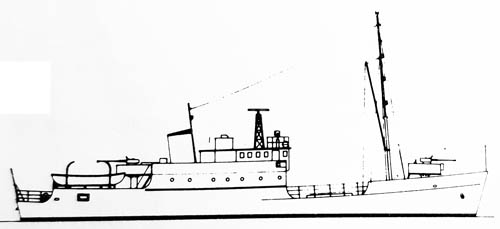
N 42 HDMS Langeland was designed and built in Copenhaguen NyD, launched in May 1950, comm. in 1951 as the first minelayer of controlled minefields. She was 310/330 tons, 41/44 x 7.2 x 2.2m, propelled by two shafts Burmeister & Wain diesels rated for 770 bhp and 12 kts. Armed with two 40 mm AA, and two 20 mm. Placed in reserve in 1982, HDMS Langeland was stricken afterwards.
Falster class (1962)
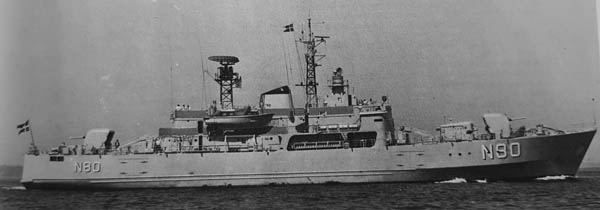
HDMS Falster 1970s
The Falster class were ordered in 1960 and 1962 (Falster, Fyen, Moen, Sjaelland) and built in Naksov and Frederikshavn, launched 1962-63. They were a special “Scandinavian” NATO design, a new type of large minelayer, able to carry 400 mines. Fyen was also used to train midshipmen and Sjelland also acted as depot ship for submarines & TBs, both in peace time. They were equipped with US armament and sensors and remained in service until 1991, refitted notably with modern electrincs, and a short range Stinger MANPAD as planned, and updated combat data system with satcom. Final armament after 1994 was a twin 76 mm Guns Mk M/60 OTO LvSa2, three Stinger Lv M/93and four Seagnat/SBROC Mk. 36 (4×6). They were decommissioned in 2000-2004.
Falster class specifications |
|
| Dimensions | 73/77 m x 12.5 x 4m (252 x 41 x 13 feets) |
| Displacement | 1800t standard, 1900t FL |
| Propulsion | 2 shafts GM 16 diesels, 4800 bhp |
| Speed/Range | 17 knots, 5,820 nmi/11 kts |
| Armament | 2x 3-in (76 mm OTO), 4x 20 mm AA, 400 mines |
| Sensors | CWS-2, NWS-2/3 radars, M-46 sonar |
| Crew | 120 |
Lindormen class (1977)
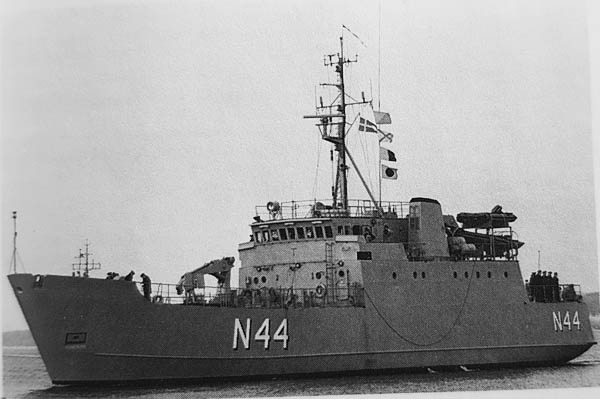
HDMS Lindormen and Lossen (N 43-44) were a new generation of Danish minelayers, both built at Svensborg to replace the 1950s Beskytteren class and Langeland. They were designed as coastal controlled minefield layers, commissioned in 1977-78. Lossen also doubled as a depot ship. The other served as a command and support ship (STANAVFORCHAN) but both ships were decommissioned on 22 October 2004. They were resold to Estonia in 2006, renamed EML Tasuja (A432) and EML Wambola (A433, in service with NATO Mine Countermeasures Group 1. Wambola was replaced by Tasuja in 2016.
Both were built at Svensborg in 1976-1978 with a steel hull in part also to be used as support vessels in peacetime. They were propelled at first by two 800 horsepower Frichs diesel engines with adjustable propellers. They were replaced during their first overhault by two MTU diesels (1600 kW) as found underpowered and slow. At first also they only had two Oerlikon 20 mm cannons fore and one aft but in the same refit in 1985, a third 20 mm was added to the forecastle. In 1997, they also received two FIM-92 Stinger, later removed when sold to Estonia. In place, the latter added two M2 Browning machine guns. They had two I-band NWS-3 navigation radars, two cranes and two utility boats, a large mine deck for 50-60 naval mines, but they were not very versatile.
Lindormen class specifications |
|
| Dimensions | 44.3/45 m x 8 x 2.5m (147 x 26 x 8 feets) |
| Displacement | 1800t standard, 1900t FL |
| Propulsion | 2 shafts Wichmann diesels, 4,200 bhp |
| Speed/Range | 14 knots, 2,500 nmi/11 kts |
| Armament | 2x 20 mm AA, 60 mines |
| Sensors | NWS-3 radar |
| Crew | 27 |
Danish cold war Minesweepers
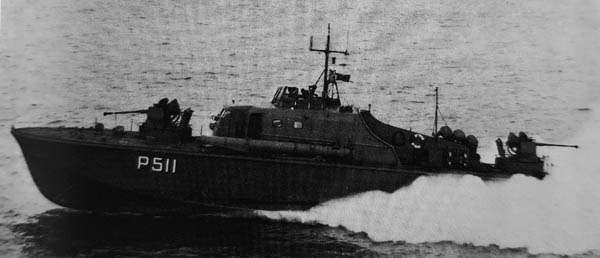
HDMS Soridderen on trials.
AMS/MSC types (1954)
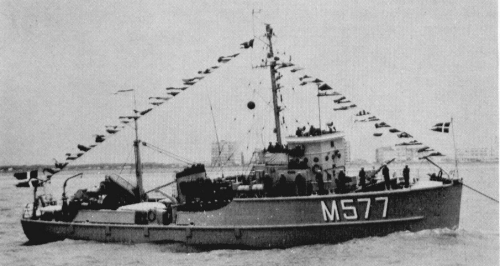
Aarösund, Alssund, Egernsund, Grönsund, Guldborgsund, Oösund, Ulvsund, Vilsund.
These were NATO Bluebird-class MSC 60 type vessels transferred under MDAP, launched 1954-56. Specs are identical to the latter. Pennants M 571-878. Two discarded in 1981, cannibalized, three stricken 1988. Guldborgsund was modified with a new superstructure deckhouse between the funnel and bridge for survey duties. She was the last stricken, in 1992. Grönsund and Vilsund were modified also that way and stricken in 1995.
ASVIG class inshore minesweepers (1960)
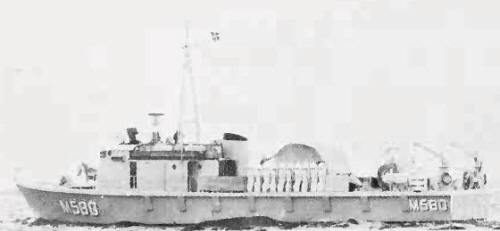
Asvig, Mosvig, Sadvig, Saelvig (M 579-82).
Four small vessels built in Copenhaguen, started 1959 launched 1961-62. As their type implies they were restricted to coastal waters. All were stricken in 1977.
Quickspecs: 180/200 tons disp., 35.4 x 7.2 x 1.7 m, 2 shafts diesels 1100 bhp, 14 kts. Armed with a single 20 mm Oerlikon AA gun. Crew 14.
MRF-1 drone minesweepers (1991)
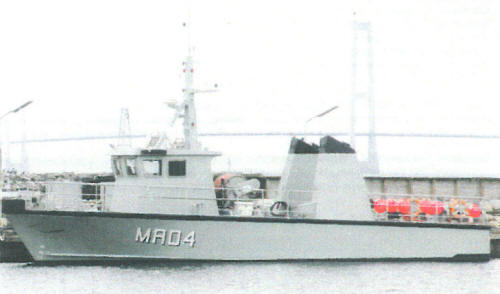
MRF1-MRF6.
Although a bit off-scope here, they were designed as a concept from 1986. Construction started in 1990 at Danyard, Alborg. Both were drone mineswepers, meaning they could be operated remotelly, and were designed to operate as a pair with HDMS Flyveisken or the rest of the class as two per one Standard 300 multipurpose combatant. Both were of GRP construction, and were pilots followed by MRD3, 4 in 1995 and MRD5, 6 the next year. They were discarded rapidly, in 2009 MRD1, 2, 5, 6 and in 2010 MRD3, 4. They were not armed.
Quickspecs: Displacement standard, t 32
Displacement 32/38 tons, 18.2 x 4.75 x 1.20m, 2 shafts azimutal waterjets, 2 General Motors Detroit Diesel diesel 350, 12 kts, Mini-Dyad magnetic minesweeping gear, Furuno radar, TSM2054 sonar. Crew: 4 or none (remote operation).


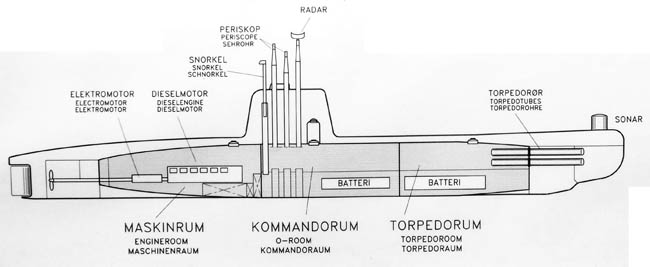
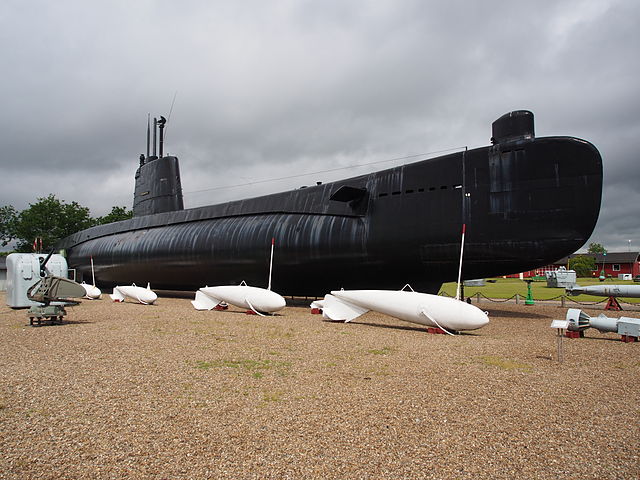
 Latest Facebook Entry -
Latest Facebook Entry -  X(Tweeter) Naval Encyclopedia's deck archive
X(Tweeter) Naval Encyclopedia's deck archive Instagram (@navalencyc)
Instagram (@navalencyc)





 French Navy
French Navy Royal Navy
Royal Navy Russian Navy
Russian Navy Armada Espanola
Armada Espanola Austrian Navy
Austrian Navy K.u.K. Kriegsmarine
K.u.K. Kriegsmarine Dansk Marine
Dansk Marine Nautiko Hellenon
Nautiko Hellenon Koninklije Marine 1870
Koninklije Marine 1870 Marinha do Brasil
Marinha do Brasil Osmanlı Donanması
Osmanlı Donanması Marina Do Peru
Marina Do Peru Marinha do Portugal
Marinha do Portugal Regia Marina 1870
Regia Marina 1870 Nihhon Kaigun 1870
Nihhon Kaigun 1870 Preußische Marine 1870
Preußische Marine 1870 Russkiy Flot 1870
Russkiy Flot 1870 Svenska marinen
Svenska marinen Søværnet
Søværnet Union Navy
Union Navy Confederate Navy
Confederate Navy Armada de Argentina
Armada de Argentina Imperial Chinese Navy
Imperial Chinese Navy Marinha do Portugal
Marinha do Portugal Mexico
Mexico Kaiserliche Marine
Kaiserliche Marine 1898 US Navy
1898 US Navy Sovietskiy Flot
Sovietskiy Flot Royal Canadian Navy
Royal Canadian Navy Royal Australian Navy
Royal Australian Navy RNZN Fleet
RNZN Fleet Chinese Navy 1937
Chinese Navy 1937 Kriegsmarine
Kriegsmarine Chilean Navy
Chilean Navy Danish Navy
Danish Navy Finnish Navy
Finnish Navy Hellenic Navy
Hellenic Navy Polish Navy
Polish Navy Romanian Navy
Romanian Navy Turkish Navy
Turkish Navy Royal Yugoslav Navy
Royal Yugoslav Navy Royal Thai Navy
Royal Thai Navy Minor Navies
Minor Navies Albania
Albania Austria
Austria Belgium
Belgium Columbia
Columbia Costa Rica
Costa Rica Cuba
Cuba Czechoslovakia
Czechoslovakia Dominican Republic
Dominican Republic Haiti
Haiti Hungary
Hungary Honduras
Honduras Estonia
Estonia Iceland
Iceland Eire
Eire Equador
Equador Iran
Iran Iraq
Iraq Latvia
Latvia Liberia
Liberia Lithuania
Lithuania Mandchukuo
Mandchukuo Morocco
Morocco Nicaragua
Nicaragua Persia
Persia San Salvador
San Salvador Sarawak
Sarawak Uruguay
Uruguay Venezuela
Venezuela Zanzibar
Zanzibar Warsaw Pact Navies
Warsaw Pact Navies Bulgaria
Bulgaria Hungary
Hungary

 Bundesmarine
Bundesmarine Dutch Navy
Dutch Navy Hellenic Navy
Hellenic Navy Marina Militare
Marina Militare Yugoslav Navy
Yugoslav Navy Chinese Navy
Chinese Navy Indian Navy
Indian Navy Indonesian Navy
Indonesian Navy JMSDF
JMSDF North Korean Navy
North Korean Navy Pakistani Navy
Pakistani Navy Philippines Navy
Philippines Navy ROKN
ROKN Rep. of Singapore Navy
Rep. of Singapore Navy Taiwanese Navy
Taiwanese Navy IDF Navy
IDF Navy Saudi Navy
Saudi Navy Royal New Zealand Navy
Royal New Zealand Navy Egyptian Navy
Egyptian Navy South African Navy
South African Navy






























 Ukrainian Navy
Ukrainian Navy dbodesign
dbodesign